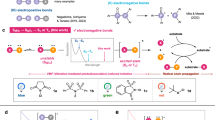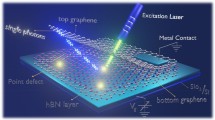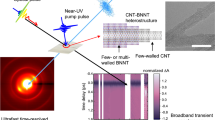Abstract
GAYDON1, in a recent paper on a new Green band system of nitrogen, has made some observations concerning the effect of excitation on the intensity distribution, from which he concludes that the new bands are a consequence of ionic rather than electron-collision excitation. He bases his conclusions on the results of Smyth and Arnott2 on the vibrational intensity distribution in the N2 band systems. It appears that Gaydon had not seen a more recent investigation of Tawde3 on the intensities in the second positive system of nitrogen. The results of Smyth and Arnott are merely the visual and densito-meter estimates of photographic blackenings ; while those of Tawde are the accurate quantitative intensity values of bands derived by rigorous methods of photographic photometry expressed in terms of energy units of a calibrated standard lamp. It has been shown by the present author and his collaborators4 in several papers that mere visual or densitometer estimates can be wrong by several percent. Hence it is doubtful how far the view put forward by Gaydon regarding the mechanism of the excitation of the new bands can be sustained.
This is a preview of subscription content, access via your institution
Access options
Subscribe to this journal
Receive 51 print issues and online access
$199.00 per year
only $3.90 per issue
Buy this article
- Purchase on SpringerLink
- Instant access to full article PDF
Prices may be subject to local taxes which are calculated during checkout
Similar content being viewed by others
References
Proc Phys. Soc., 56, 85 (1944).
Phys. Rev., 36, 1023 (1930).
Proc. Phys. Soc., 46, 324 (1934).
Proc. Roy. Soc., A, 137, 575 (1932); Proc. Ind. Acad. Sci., 2, 67 (1935).
Phil. Mag., 18, 696 (1934).
Author information
Authors and Affiliations
Rights and permissions
About this article
Cite this article
TAWDE, N. New Green Band System of N2 and Conditions of Excitation. Nature 157, 136 (1946). https://doi.org/10.1038/157136a0
Issue date:
DOI: https://doi.org/10.1038/157136a0



